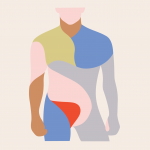Acute Myeloid Leukemia (AML): Overview
What causes this rare blood cancer, and how do doctors treat it? SurvivorNet's team of experts demystifies acute myeloid leukemia (AML), and helps you navigate every step of the treatment process.
Explore popular AML articles and topics
Do I Need Screening?
AML doesn’t have the equivalent of a routine mammogram or pap smear. You can't do self-exams, like for breast cancer. You could notice symptoms first, or your doctor might find AML incidentally on a blood test that you have for another reason.
What Are the Symptoms of AML?
AML causes certain symptoms, but having these symptoms doesn't necessarily mean that you have AML. Your doctor will do diagnostic tests to confirm whether or not you have AML before recommending a treatment.
The symptoms of AML can be subtle, says Dr. Mikkael Sekeres
AML symptoms include:
- Fever
- Frequent infections
- Feeling tired or weak
- Easy bruising or bleeding
- Petechiae, which are blood spots under the skin
- Weight loss or loss of appetite
- Dull or sharp bone pain, usually in the legs and arms
- Pale skin
Getting a Diagnosis
The tests your doctor can use to diagnose you with AML include:
- Blood tests. In people with AML, white blood cell counts may be high, and red blood cell and platelet counts may be low. These tests can also show immature cells in the blood that should only be found in the bone marrow.
- Bone marrow biopsy. Removing and testing a sample of the bone marrow helps to confirm AML after an abnormal blood test result.
- Lumbar puncture. This test uses a sample of spinal fluid to diagnose AML.
- Molecular and genetic testing. Your doctor can do tests to determine whether you have certain genes related to AML, and if your cancer might respond to specialized treatments.
Dr. Tara Lin describes what happens during a bone marrow biopsy
After a diagnosis, it's important for your doctor to know your risk group, which is based on your gene mutations and chromosomes. This will help your doctor find the right therapy for you.
Symptoms & Diagnosis
AML Treatment Options
AML treatment is typically done in two phases:
Induction chemotherapy uses strong drugs to reduce the number of leukemia cells in your body and put you into remission.
How do you and your doctor make important AML treatment decisions?
The initial chemotherapy treatment includes a combination of two drugs. Sometimes doctors add a targeted drug, which blocks certain proteins or other substances the cancer cells need to grow.
Dr. Richard Stone of Dana-Farber Cancer Institute describes the two phases of AML treatment
Post-remission, or consolidation therapy is the next phase of treatment, which starts once you're in remission. The goal is to get rid of any remaining cancer cells and keep you in remission.
This phase can include high-dose chemotherapy or a stem cell transplant (also called a bone marrow transplant), in which you get very high doses of chemotherapy to kill the abnormal bone marrow cells, and then healthy cells from yourself or a donor to replace the cells that chemotherapy killed. Targeted drugs may be used for consolidation, too.
Medical oncologist, Dr. Caitlin Costello, tells you what to expect after a stem cell transplant
Other, newer treatments are being tested in clinical trials. Ask your doctor if any therapies under investigation might be appropriate for you.
The effects of leukemia treatment are very individualized. Treatment may get rid of all leukemia cells for some people, while others will have to remain on chemotherapy long-term to control their cancer. Expect to have follow-up exams after treatment, usually every month to begin with, and then at longer intervals. These repeat visits are designed to help your doctor spot the signs of a relapse, if it occurs.
What happens when AML returns? NYU Langone Health Clinical Leukemia Program director, Dr. Raoul Tibes, explains
Many people work with their cancer care team to develop a survivorship care plan. This helps them strategize next steps, figure out ways to cope with the side effects of treatment, schedule follow-up exams, and manage their diet/exercise goals.

Please confirm you are a US based health care provider:
Yes, I am a health care Provider No, I am not a health care providerSign Up Now.
Take Control of Your Disease Journey.
Sign up now for expert patient guides, personalized treatment options, and cutting-edge insights that can help you push for the best care plan.




